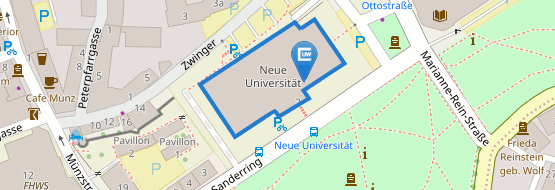Informationsökonomik
Seit den 1960er und 1970er Jahren wird in der mikroökonomischen Theorie anerkannt, dass zahlreiche ökonomische Transaktionen durch asymmetrische Informationsverteilung gekennzeichnet sind, d.h., eine der beteiligten Parteien besitzt private Information, zu der die übrigen Parteien keinen Zugang haben. So ist, zum Beispiel, der Hersteller in der Regel besser über die Qualität des von ihm angebotenen Produkts informiert als die potenziellen Käufer dieses Produkts. Solch eine asymmetrische Informationsverteilung stellt eine maßgebliche Ursache für die Ineffizienz ökonomischer Transaktionen dar. Die Informationsökonomik im Allgemeinen und die Vertragstheorie im Speziellen nimmt sich der Frage an, auf welche Weise auf die aus asymmetrischer Informationsverteilung resultierenden Friktionen durch die geeignete Gestaltung von Verträgen bzw. institutionellen Rahmenbedingungen reagiert werden sollte.
Kapitel 1: Moralisches Risiko
- Kapitel 4 in D. Martimort and J.-J. Laffont (2001), "The Theory of Incentives: The Principal-Agent Modell"
Kapitel 2: Adverse Selection
- Kapitel 2 in D. Martimort and J.-J. Laffont (2001), "The Theory of Incentives: The Principal-Agent Modell"
Voraussetzungen
Die Vorlesungsinhalte werden mit Hilfe mathematisch präziser Modelle erarbeitet. Vor diesem Hintergrund wird Vertrautheit mit den Grundlagen der Differentialrechnung vorausgesetzt. Weitere mathematische, sowie spieltheoretische oder ökonometrische Vorkenntnisse sind nicht erforderlich.
Literatur
Die oben angeführten Literaturhinweise sind nicht als Pflichtlektüre zu verstehen. Vielmehr handelt es sich um Literaturhinweise, die es erlauben, die Vorlesungsinhalte zu wiederholen und bei Interesse zu vertiefen.
During the 1960/70s, microeconomic theory came to acknowledge that many (if not most) economic transactions are characterized by asymmetric distribution of information – i.e., at least one of the parties participating in a transaction usually is privy to information that the remaining parties do not have access to. For example, the producer is usually better informed about the quality of the product than the potential buyers of that product. This asymmetric distribution of information subsequently was recognized to be a major impediment for transactions to be economically efficient. The Economics of Information in general and Contract Theory in particular addresses the question, how the inefficiencies arising from asymmetric distribution of information can best be mitigated by appropriate design of the contractual (or, more generally, institutional) framework that governs the transaction under consideration.
Chapter 1: Moral Hazard
- Chapter 4 in D. Martimort and J.-J. Laffont (2001), "The Theory of Incentives: The Principal-Agent Modell"
Chapter 2: Adverse Selection
- Chapter 2 in D. Martimort and J.-J. Laffont (2001), "The Theory of Incentives: The Principal-Agent Modell"
Prerequisites
Even though we will work with precise mathematical formalizations of the ideas that we want to think and talk about, this course requires little more than a solid understanding of basic differential calculus. Other mathematical, game theoretic or econometrics knowledge is not required.
Literature
The references mentioned above are not meant to be mandatory readings but rather as voluntary for those who are interested in gaining additional related insights that go beyond the scope of this lecture.


